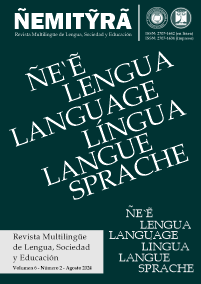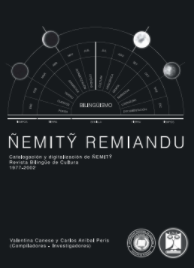Teachers’ Practices and Students’ Perceptions on Feedback
DOI:
https://doi.org/10.47133/NEMITYRA20240602b-A11Palabras clave:
feedback, reinforcement, effective Teaching and Learning, outputResumen
This article presents ideas on Teachers’ Practices and Students’ Perceptions on feedback. The main objective of this study was to explore the practices of providing feedback in the semester classes of Master’s in English Education. It has tried to find out the perceptions of the students on the role of feedback in their learning. Case study research design was used in this study. To meet the set objectives, 2 teachers and 4 students from M.Ed. first semester, Department of English Education, Gramin Adarsha Multiple Campus were selected using purposive sampling strategy. Open-ended questionnaire and observation were used as the main tools for eliciting the required information. Besides, researcher’s own diary and experiences were used to take notes of specific cases which were not included in the observation. From the analysis of data and interpretation of the results, it was found that the teachers practiced correcting as the common way of providing feedback to the students. Similarly, the students perceived feedback as an information provided to the learners with the objective of improving their performance. They said that feedback played a constructive and catalytic role in their learning. Teachers’ feedback worked as a motivation tool in the process of teaching and learning.
Referencias
Department of Education Communities, NEALS. (2015). Strong Start, Great Teachers-Phase 3. State of New South Wales.
Doughty, C. J., & Long, M. H. (2003). The Handbook of second language acquisition. Oxford: Blackwell Publishing.
Ferreira, A., Moore, J. D., & Mellish, C. (2007). A study of feedback strategies in foreign language classrooms. International Journal of Artificial Intelligence in Education, 17, 389-442.
Gass, S., & Selinker, L. (2008). Second language acquisition: An introductory course. London: Routledge.
Harmer, J. (2008). The practice of English language teaching. London: Pearson Longman.
Hattie, J., & Timperley, H. (2007). The Power of Feedback. Review of Educational Research, 77(1), 81-112.
Hattie, J., & Yates, G. (2014). Effective Feedback in the Classroom. In Applying Science of Learning in Education. Washington, DC: American Psychological Association.
Hyland, F. (2003). Focusing on form: student engagement with teacher feedback. System, 31(2), 217-230.
Hyland, K., & Hyland, F. (2006). Feedback on Second Language Students' Writing. Language Teaching, 39(2), 83-101.
Joishi, S. (2012). Feedback techniques used by secondary level teachers (Unpublished master's thesis). Tribhuvan University, Kathmandu.
Kepner, C. G. (1991). An experiment in relationship of types of written feedback to the development of writing skills. Modern Language Journal, 75, 305-315.
Khaniya, T. R. (2014, January 26). Semester System in TU: Promise or Peril. The Himalayan Times.
Kumar, R. (2009). Research methodology. London: Sage Publication.
Mackey, A. (2006). Feedback, noticing and instructed second language learning. Applied Linguistics, 27(3), 405-430.
Nicholas, H., Lightbown, P. M., & Spada, N. (2001). Recast as feedback to language learners. Language Learning, 54(4), 719-758.
Nicol, D. J., & Dick, D. M. (2006). Formative assessment and self-regulated learning: a model and seven principles of good feedback practice. Studies in Higher Education, 31(2), 199-218.
Petchprasert, A. (2012). Feedback in Second Language and Learning. David Publishing, 10(4), 1112-1120.
Pokhrel, B. (2016). Teachers' perception and practice of using Nepali language in providing feedback (Unpublished master's thesis). Tribhuvan University, Kathmandu.
Upadhyay, M. K. (2015). Role of delayed feedback in developing writing (Unpublished master's thesis). Tribhuvan University, Kathmandu.
Ur, P. (1996). A course in language teaching. Cambridge: Cambridge University Press.
Descargas
Publicado
Número
Sección
Licencia
Derechos de autor 2024 Mani Ram Sharma; Shiv Ram Pandey; y Revista Ñemitỹrã

Esta obra está bajo una licencia internacional Creative Commons Atribución 4.0.










